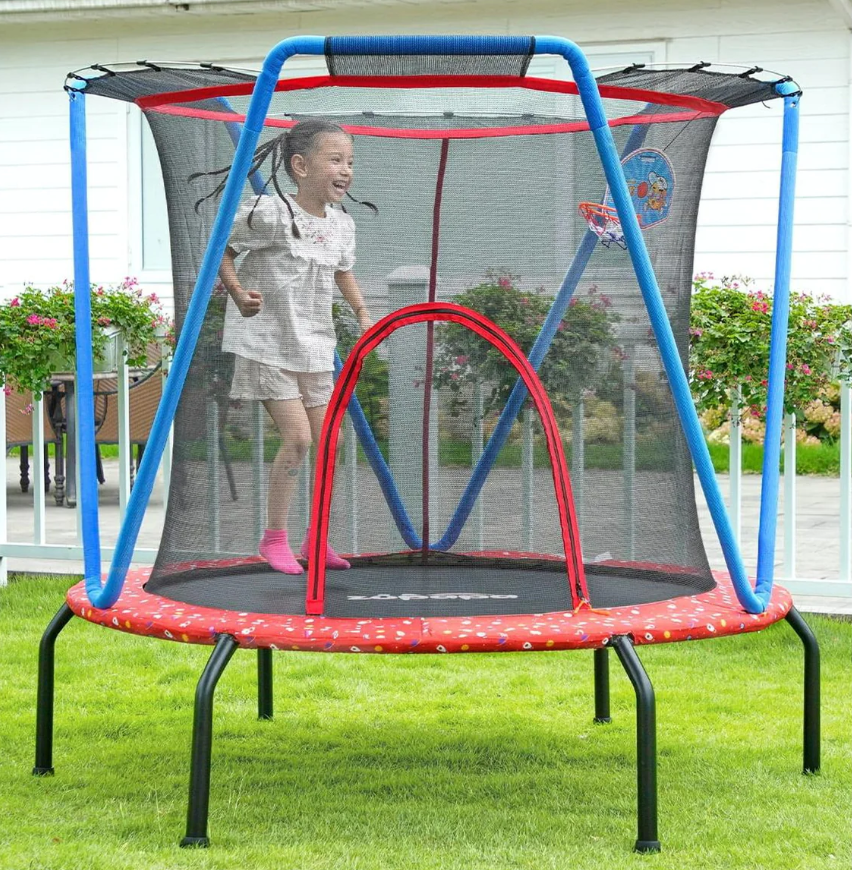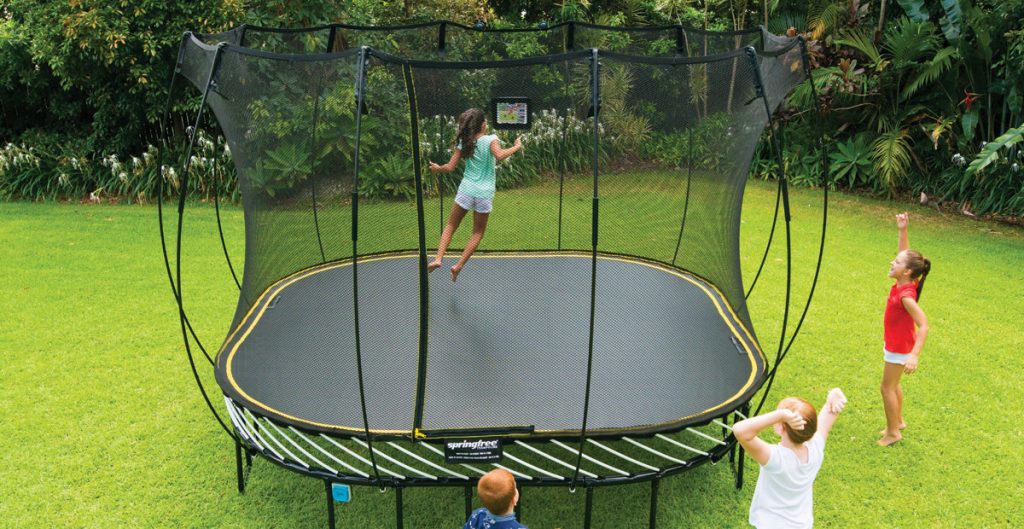
Trampolines: Bouncing into Fun and Fitness
Trampolines have long been a source of exhilarating entertainment and a tool for physical fitness. From backyard play to dedicated fitness routines, trampolines offer a versatile and enjoyable way to stay active. In this article, we’ll explore the fascinating world of trampolines, delving into their history, the different types available, the benefits they provide, safety considerations, and the growing trend of trampoline parks.
1. A Leap Through Time: The History of Trampolines
The concept of bouncing on a flexible surface has ancient roots, with evidence of people using blankets or animal skins to propel themselves into the air. However, the modern trampoline as we know it was developed in the early 20th century. George Nissen and Larry Griswold, inspired by circus safety nets, created the first trampoline in 1936. Originally used for training gymnasts and military pilots, trampolines soon found their way into the hearts of families around the world as a recreational activity.
2. Types of Trampolines: From Backyards to Specialized Arenas

a. Backyard Trampolines:
The quintessential backyard trampoline is a staple of family recreation. Available in various sizes, these trampolines often feature a frame, springs, a jumping mat, and safety padding. They provide a dynamic and enjoyable way for children and adults alike to engage in outdoor play and exercise.
b. Fitness Trampolines:
Fitness trampolines, also known as rebounders, have gained popularity in recent years for their role in low-impact cardiovascular workouts. These trampolines are designed with smaller frames and provide a stable surface for bouncing, making them ideal for home workouts that enhance cardiovascular fitness and improve balance.
c. Water Trampolines:
Water trampolines take the bouncing experience to the next level by floating on bodies of water. These are commonly found in lakes, ponds, and even in some water parks. The buoyant platform adds an extra element of thrill to the traditional trampoline experience.
d. In-Ground Trampolines:
In-ground trampolines are installed at ground level, providing a sleek and integrated look in backyard settings. With the jumping surface flush with the ground, these trampolines offer easy access and reduce the risk of falls associated with elevated models.
3. Health and Fitness Benefits: Bouncing Towards Wellness
a. Cardiovascular Exercise:
Bouncing on a trampoline (https://leotoystore.com/collections/trampoline) is an excellent cardiovascular exercise that gets the heart pumping and improves circulation. It’s a fun way to boost cardiovascular fitness without the impact stress associated with activities like running.
b. Low-Impact Workout:
Trampolining is a low-impact exercise that is gentle on the joints. The shock-absorbing surface reduces the stress on the ankles, knees, and hips, making it suitable for individuals looking for a joint-friendly workout option.
c. Improved Balance and Coordination:
The act of bouncing and maintaining balance on a trampoline engages core muscles and helps improve coordination. Regular use can contribute to enhanced stability and a better sense of spatial awareness.
4. Safety Considerations: Bouncing Responsibly

a. Enclosures and Safety Nets:
Many backyard trampolines come with safety enclosures or nets that surround the jumping area. These features help prevent accidental falls and provide an added layer of protection.
b. Proper Supervision:
Supervision is crucial, especially when children are using trampolines. Having a responsible adult present can help ensure that safety guidelines are followed, and any potential risks are addressed promptly.
c. Weight Limits and Capacity:
Trampolines have weight limits, and it’s essential to adhere to these guidelines. Exceeding the weight capacity can compromise the trampoline’s structure and increase the risk of accidents.
5. The Rise of Trampoline Parks: Jumping into a New Trend
In recent years, trampoline parks have emerged as a popular destination for individuals seeking a dynamic and entertaining way to stay active. These indoor facilities feature interconnected trampolines, foam pits, and various obstacles, offering a unique and immersive experience for visitors of all ages. Trampoline parks have become social hubs where friends and families gather to enjoy high-flying adventures in a controlled environment.
6. Trends and Innovations: Beyond Bouncing
a. Fitness Classes and Rebounding Workouts:
Trampolining has evolved beyond casual play, with fitness classes and rebounding workouts gaining popularity. Studios and gyms offer structured classes that leverage the benefits of trampoline exercise for a full-body workout.
b. Augmented Reality Trampolines:
Innovations in technology have led to the integration of augmented reality (AR) with trampolines. Some trampoline parks now offer AR-enhanced experiences, where digital elements are overlaid onto the physical trampoline environment, creating a fusion of the virtual and real worlds.
c. Sustainability in Design:
As environmental consciousness grows, there is a trend towards sustainable trampoline design. Manufacturers are exploring eco-friendly materials, energy-efficient production processes, and recyclable components to reduce the ecological impact of trampoline manufacturing.
7. Conclusion: Soaring to New Heights of Fun and Fitness
In conclusion, trampolines have transcended their origins as training tools and have become a symbol of pure enjoyment and physical activity. From the joyous bouncing in backyard settings to the structured workouts in fitness studios, trampolines continue to captivate individuals of all ages. As safety measures evolve, and innovations add exciting layers to the trampoline experience, it’s clear that this timeless activity will keep bouncing into the hearts of many, offering a blend of fun, fitness, and boundless adventure.